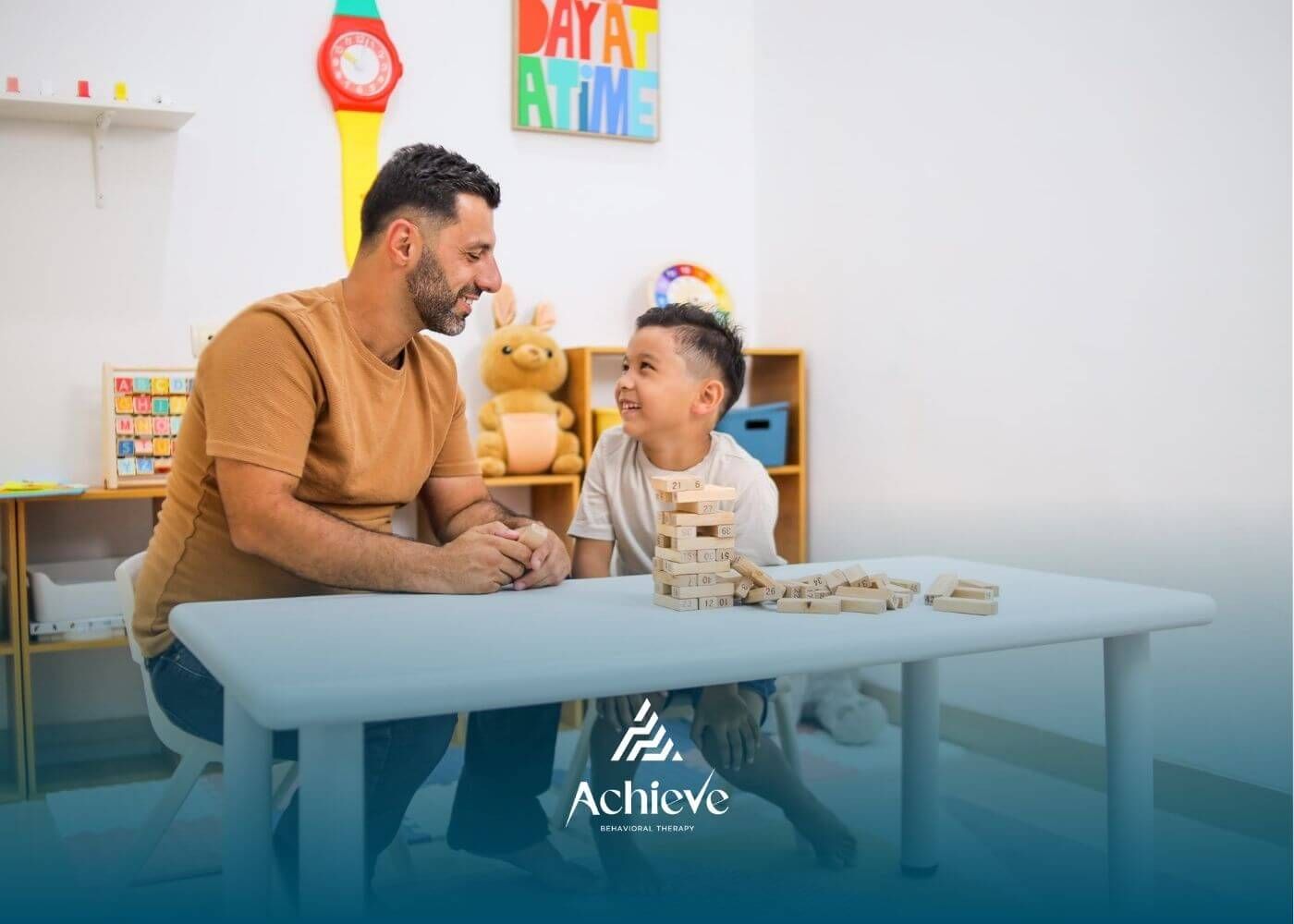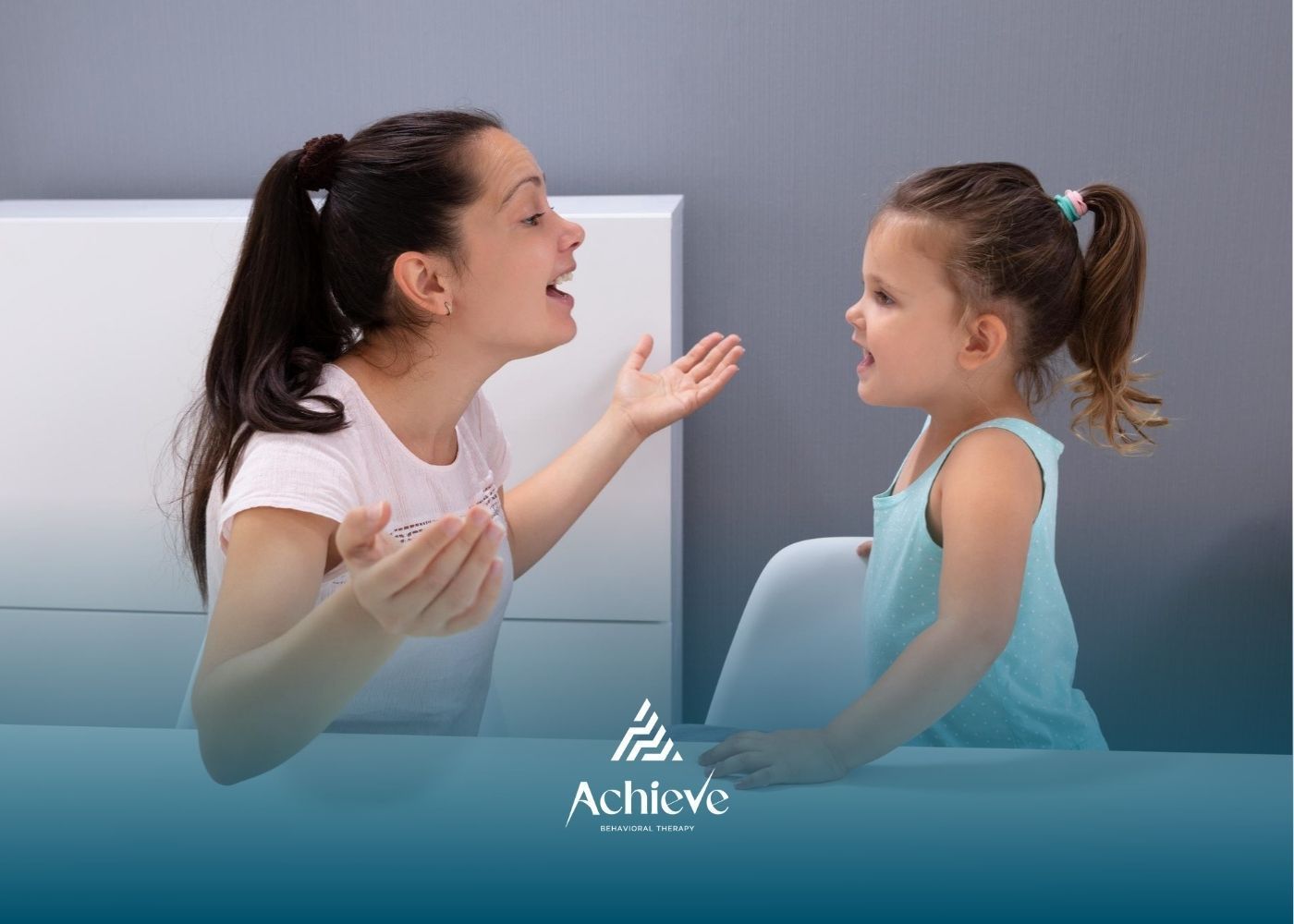Exploring ABA Therapy Duration and Timeline

ABA therapy, which stands for applied behavior analysis, is known as a good way to help people who have autism spectrum disorder. In ABA therapy, people work on skills like talking, social skills, and doing things on their own. The goal is to help them be more independent. Still, a lot of parents and caregivers often ask about how long the duration of ABA therapy might be, and what things might make it longer or shorter.
Because every person is different, the time in therapy is not the same for all people. In this post, you will learn about how ABA therapy is set up, what its main aims are, and what things can change how long it lasts. By knowing this, you will get a better idea of how applied behavior analysis helps people.
Defining ABA Therapy and Its Purpose
ABA therapy uses facts and numbers to help people learn important life and behavior skills. The goal is to help the person build positive behaviors, change tough ones, and learn new things that make their quality of life better. It teaches by breaking tasks into small and easy steps. This makes it easier for all kinds of learners to succeed.
Behavior analysts work with families and caregivers to set goals that fit the person’s age and needs. They all work together, so ABA therapy keeps helping in the right way and matches what the person wants for their life.
Key Principles of Applied Behavior Analysis
Applied behavior analysis, or ABA therapy, uses science-based ways to help people learn new behaviors and reduce the ones that cause problems. A certified behavior analyst looks at what a person can do now. Then, they make a therapy plan to help build new skills and important abilities.
One key idea in ABA therapy is that every plan is made just for that person. It does not matter if the goal is better social skills or help with certain problems. Each therapy plan is tailored to what the person needs most. This focus on the individual is what makes behavior analysis work so well.
These interventions use a mix of structure and flexibility. The certified behavior analyst is always watching and collecting data about how the person behaves. They use this information to change the plan, making sure it fits how the person is growing.
This ongoing feedback keeps the therapy connected to what the individual wants and needs. It helps people regularly improve in many ways and reach their own individual goals and foundational skills.
Common Goals Targeted in ABA Therapy
ABA therapy is built around specific goals that help improve the well-being of people. Every plan is made to fit what each person needs. It looks at how to help with their way of learning, their social interactions, and any challenging behaviors.
- Social interactions: This goal helps teach the right ways to act with friends and family. It makes it easier for someone to get along and build strong ties with others.
- Communication skills: This focus is on helping people talk, share thoughts, and ask for what they need. It can be through words or actions, depending on what works best for them.
- Challenging behaviors: Here, the aim is to cut down on tough actions such as being upset a lot or acting out. The therapist shows other, more appropriate behaviors to do in those times.
- Daily skills: This is about making people able to do more for themselves, like dressing up, eating, or getting around places outside their home.
When people keep working on these aba therapy goals with support, they get better at facing everyday life. They become more independent. Every goal is changed to suit each person. The plan fits their age, what they can do, and what they need, so they get the most out of it.
Typical Structure and Timeline of ABA Therapy Programs
ABA therapy programs use treatment plans that fit each person’s unique needs. The main goal is to help people grow over a long time. The structure includes therapy sessions that can be from 10 to 40 hours each week. There are two models for these programs. One is focused treatment plans, and the other is comprehensive treatment programs.
Focused treatment plans work on teaching a few specific skills. Comprehensive programs cover many areas of development and need more intense work. The timeline for progress is not fixed. It changes based on the person’s progress, what they need, and what the goals of the therapy are. This way, ABA therapy programs stay helpful for the people who use them. They always make sure that therapy sessions stay on track with the long-term goals.
Average Duration of ABA Therapy Sessions
ABA therapy sessions can be different in how long they last. The time often depends on the treatment plan and how much therapy a person needs. Here is a clear breakdown:
Focused vs Comprehensive ABA Therapy
A Visual Guide to Help Choose What's Best for Your Child
Applied Behavior Analysis (ABA) therapy is the gold standard for autism treatment, but choosing between Focused and Comprehensive programs can be challenging. This interactive guide visually compares both approaches and helps you determine which might be the best fit for your child's unique needs.
Both methods are evidence-based and effective, but they differ significantly in intensity, duration, and goals. Understanding these differences is key to making an informed decision for your child's developmental journey.
Focused ABA Plan
Targeted intervention for specific challenges
Focused ABA targets specific behavioral concerns or skill deficits with concentrated intervention.
Best for:
- Children with 1-3 specific concerns to address
- Older children and teens
- Families needing flexible scheduling
- Targeted skill acquisition (toileting, feeding, sleep)
- Behavior reduction (aggression, self-injury, elopement)
Key Benefits:
- Requires less time commitment
- Produces noticeable results in shorter timeframes
- More adaptable to family schedules
- Can be implemented in natural settings
Comprehensive ABA Plan
Holistic approach for broad development
Comprehensive ABA addresses multiple developmental domains simultaneously for foundational growth.
Best for:
- Younger children (typically 2-6 years)
- Children with significant delays in multiple areas
- Building foundational skills across domains
- Early intensive intervention
- Children needing broad developmental support
Key Benefits:
- Addresses multiple skill deficits simultaneously
- Creates foundational skills for future learning
- Provides intensive support during critical periods
- Often leads to significant cognitive gains
- Helps with generalization across settings
ABA Therapy Recommendation Calculator
Answer these questions to get a personalized recommendation on which ABA approach might be best for your child.
Our Recommendation
Based on your responses, Comprehensive ABA appears to be the best approach for your child.
Why this approach?
Comprehensive ABA therapy provides intensive, broad-based intervention that addresses multiple developmental domains simultaneously. This approach is particularly effective for younger children who need foundational skill development across several areas.
Next Steps: We recommend consulting with a Board Certified Behavior Analyst (BCBA) who can conduct a formal assessment and develop a personalized treatment plan for your child.
The number of therapy hours given is set by the goals for ABA therapy, what someone can do, and their starting or baseline skill levels. Therapy sessions are checked often. This helps to make changes when needed, so progress keeps up and will be good for each person.
Standard Length of Treatment Plans
Treatment plans for ABA therapy are set up based on what each person needs and how much help they need. The length of time for therapy is not the same for everyone. It changes depending on whether you have focused or comprehensive intensive therapy.
Focused treatment plans usually last 6 months to 2 years. The main point is to work on certain goals. With this kind of intensive treatment, you and your team will examine important targets.
Comprehensive plans are different. They deal with more areas and bigger types of developmental challenges. These intensive therapy plans often go on for 3 to 5 years, and the work is more in-depth over a longer time.
Still, these lengths of time are not fixed. Regular check-ins happen often. The team looks at your progress to know if your intensive therapy should end or be longer, depending on how you grow and get new skills. One important goal of ABA therapy is for people to use what they learn in daily life and not need so much intensive treatment later on.
Factors Affecting the Duration of ABA Therapy
The length of ABA therapy can be different for each person. It depends on how severe the autism symptoms are and the unique needs of the client. Some people may need intense, long-term therapy, especially if they have more than one challenge with their development. Others, who have milder symptoms, could get better in less time.
Family involvement matters a lot, too. What happens at home and how much families practice with their child can help make progress faster. When treatment plans are made to fit individual needs, ABA therapy gives the best results for every client.
Individual Needs and Diagnosis Severity
One of the main things that affects how long ABA therapy will take is the person’s unique needs and how severe their symptoms of autism are. The symptoms can be very different. Some people have few problems, and some have bigger challenges that can be seen in many areas.
At the start of ABA therapy, baseline skill levels are checked. If someone starts with fewer skills, it may take more time to build up their foundational skills. If their baseline abilities are higher, they can often meet goals faster and move through the therapy more quickly.
ABA therapy is flexible so it best fits each person’s unique needs. Success comes when someone not only has fewer challenging behaviors, but also shows steady gains in being independent in all areas of life.
Family Involvement and Home Environment
Family involvement is key in ABA therapy. The home is where kids use new skills during everyday life. When parents and other caregivers give positive reinforcement, it boosts what is learned in therapy.
Keeping the family involved helps behavioral techniques work in different environments. By staying in touch with the aba provider, families get ways to bring out positive behaviors and handle problems that come up in their child's day. This teamwork between families and therapists makes the therapy more helpful.
The home also needs to help learning happen. A place that supports learning, with clear and steady reinforcement, helps the person use the things they learn in more than one place. This way of working together makes a big difference in the success of ABA therapy.
Assessing Progress and Adjusting ABA Therapy
Monitoring how a child is doing during ABA therapy is very important. It helps ensure that the therapy is helping and that the treatment plans match the unique needs of each child. A certified behavior analyst does regular checks to see what the child is good at and where the child may need some help. They look closely at the specific goals and treatment plans. If needed, changes can be made so the therapy gives better results.
This way of working is very useful. It helps the child get new skills and supports positive behaviors. As a result, it can make the child’s quality of life better and also help with their social interactions.
Methods for Measuring Client Progress
Setting up good ways to measure how clients are doing is important in applied behavior analysis. In this field, the use of data collection, like watching a person’s actions, helps therapists keep track to see which behaviors show up and how skills grow over time. Using these methods gives the therapist a clear picture. Some tests are the same for every child. These can give good information about where a child is in their development.
Working often with a certified behavior analyst is needed. This helps make sure the plan stays right for each person’s unique needs. When you use the right tools, you see more about what challenging behaviors and which appropriate behaviors someone shows. This allows people to get better over time.
Reevaluation and Modifications to Treatment Plans
Regular checks of treatment plans are key for getting the most out of ABA therapy. A certified behavior analyst usually looks at how much progress there is on specific goals. This helps to change the plan to fit the unique needs of the child.
By always adjusting, the strategies can keep up with changes in the child’s skills and actions. This way, the approach stays personal. When caregivers focus on these checks, they help the child keep growing. This lets them make changes that boost positive behaviors and improve the quality of life.
Transitioning and Discontinuing ABA Therapy
Transitioning away from ABA therapy means looking at the child’s unique needs and overall performance. A certified behavior analyst will see if the child is learning enough skills and look for signs that show the child is ready to move forward. Talking clearly about this change is very important. It helps to make sure the child still gets support.
When you stop ABA therapy, focus on the positive behaviors the child has learned. Show how these new skills can help the child in everyday life. This will help the child become more independent while still growing in communication skills and social interactions. Helping with this change can give the child a better future.
Signs a Child Is Ready to Transition
Several things can show that a child is ready to move on from intensive ABA therapy. You may notice big steps forward in communication skills and positive behaviors. It also helps if the child is able to use new skills in different environments.
This means they can act more independently. When you see fewer repetitive behaviors and better, more natural social interactions, that is a sign of progress. Reaching specific goals in the therapy plan is also important. It shows the child is ready to get less intensive support while still keeping a good quality of life.
Steps to Support a Successful Transition
Helping a child move to a new setting goes better when everyone works together and talks clearly. Start by talking about individual goals with the ABA therapist. Make sure the new place matches what the child needs and likes. Change things little by little so the child can get used to it. This way, it will not be too much for them. Doing this helps them feel more at ease and less anxious.
It is good to keep open conversations between the child, parents, and ABA professionals. This makes it easier to use skills in different environments. It also helps the child keep growing, stay on the right track, and get the most out of ABA therapy.
Conclusion
In closing, knowing how long ABA therapy lasts is important to help each child make the most progress. When families and certified behavior analysts often check on individual goals and adjust treatment plans, they can make sure that ABA therapy works well and fits the child’s unique needs.
This kind of teamwork helps kids learn new skills and develop positive behaviors, which can really make their quality of life better. In the end, applied behavior analysis supports children to reach their full potential and look forward to a better future.
If you’re looking for personalized ABA support grounded in evidence-based practices, Achieve Behavioral Therapy offers programs designed to fit each child’s needs and family goals. Their team focuses on building meaningful skills, fostering independence, and working closely with caregivers to make progress that lasts beyond the therapy room.
Frequently Asked Questions
How many hours per week is ABA therapy typically recommended?
ABA therapy usually happens for about 20 to 40 hours each week. How much time is needed depends on every individual child and their own needs or goals. Working at this level can help the child make good progress and pick up new skills. At the same time, it is important to think about what the family can do to help with aba therapy so it works well.
Can ABA therapy duration change over time?
Yes, the duration of ABA therapy can go up or down depending on how the person is doing and what they need at the time. Regular check-ins help to see if anything needs to change or be added. This way, ABA therapy stays useful and fits the client's main goals as they grow.
What are some signs that ABA therapy is effective?
Some signs that show ABA therapy is working are easy to spot. You may see a child start to talk and share their feelings more. There may be fewer challenging behaviors. You might notice better social interactions with other kids or adults.
The child could also start to do more things alone in their day. Caregivers and parents who give feedback and do regular checks can also help spot how well the child is doing. These steps help everyone give the right support for the child's growth.
Is there an ideal age to start or stop ABA therapy?
There is no one best age to start or stop ABA therapy. Every child is different and may need support at different times. Early intervention can help many children, but some may need help as they get older or even into their teen years. An individual check-up for each child will help decide when to start or stop the therapy.
What should I do if I feel my child’s ABA therapy is too long or too short?
If you think the time your child spends in their ABA therapy is not right, talk to your therapist. Having an open talk helps the therapist to do a careful check. This can help them change the treatment plan to fit your child's needs and how they are doing right now. This way, aba therapy works better for your child.
Need Support?
We're Here to Help!
Our experienced team is ready to assist you. Reach out today to discuss how we can support your child's development and well-being.
Get started with expert ABA therapy today.














